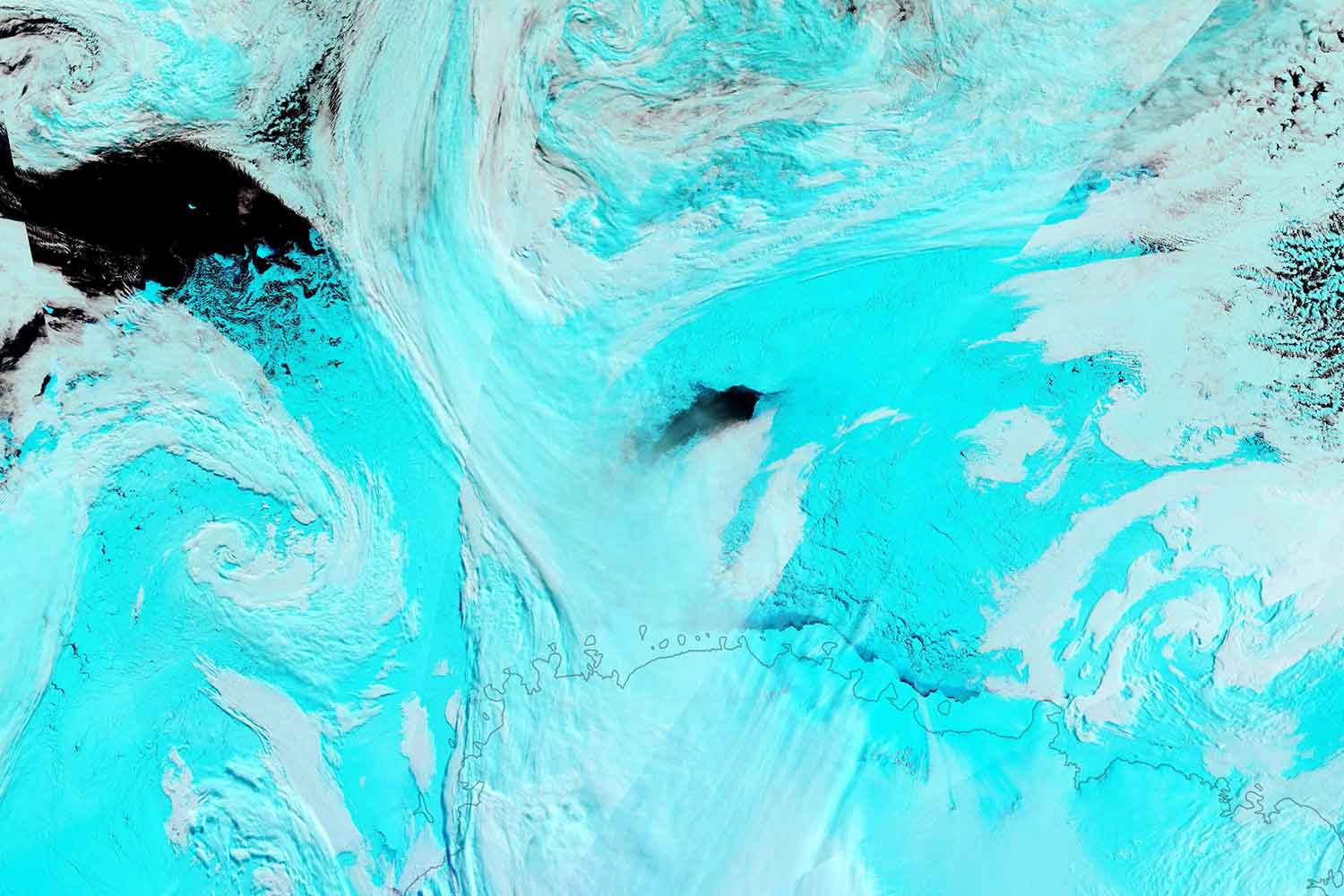A massive hole keeps forming in Antarctica’s sea ice. Scientists have solved the mystery, revealing crucial insights into future climate shifts.

©earth observatory nasa
It’s like something out of a sci-fi novel: a hole in the sea ice the size of Switzerland—roughly 16,000 square miles (41,000 square kilometers)—opens and closes mysteriously in the frozen waters of the Weddell Sea, near the underwater plateau of Maud Rise in Antarctica. And it’s been doing this for decades. But only now, researchers have figured out what’s behind the phenomenon.
Known as the Maud Rise polynya, this recurring feature was first spotted back in the 1970s. For years, it would appear sporadically, only to vanish again—leaving behind more questions than answers. But in 2017, something changed. The polynya opened up wider and stayed open longer than ever before, giving scientists the rare chance to study it up close.
The strange logic of ice that doesn’t freeze
Polynyas are areas of open water surrounded by sea ice, and they typically form when warmer waters from the ocean’s depths rise to the surface, melting the ice above and preventing new ice from forming. It’s a familiar process in coastal regions, where strong winds help churn the ocean and bring deeper waters up.
But that’s not what’s happening here.
What puzzled scientists for so long is that Maud Rise lies far from the Antarctic coast, and without those coastal winds, open-sea polynyas like this one shouldn’t be able to form so easily. In other words, there was no obvious trigger—no usual suspect to blame.
And yet, in 2016 and again in 2017, this deep hole in the ice emerged and remained for weeks, defying expectations.
When salt, wind, and topography conspire
The breakthrough came when researchers observed that the Weddell Gyre, the vast circular ocean current in this part of Antarctica, was unusually strong during those years. That powerful flow helped move both salt and heat upward, toward the ocean surface.
Here’s where it gets interesting: Maud Rise isn’t just a name—it’s a real mountain, buried deep beneath the sea. As the Weddell Gyre intensified, salty water was pulled around this seamount, while winds blew steadily above. That created a swirling, spiral-like system, one that carried saltier water up toward the surface.
Why does that matter? Because salt lowers the freezing point of water. So as the surface layer became saltier, it became harder for new sea ice to form—even in freezing conditions. The result? The polynya remained open, a liquid wound in an otherwise solid landscape.
As one researcher put it: “The persistence of the Maud Rise polynya isn’t just a quirk of weather—it’s the product of deeper, structural forces in the ocean and atmosphere.”
What this means for the future of the planet
While it may seem like a local curiosity, the implications are anything but small. As climate change continues to intensify polar winds, scientists warn that we could see more frequent and longer-lasting polynyas in the future. That, in turn, could disrupt ocean circulation patterns and alter how heat moves across the planet.
“Le polynie non solo influenzano le correnti oceaniche, ma anche il trasporto di calore verso le piattaforme continentali,” one researcher explains.
In other words, what happens in the Weddell Sea doesn’t stay in the Weddell Sea. These deep-sea dynamics have the potential to reshape global climate systems, impacting everything from sea level rise to weather extremes far beyond the poles.
And as we begin to uncover the mechanisms behind such phenomena, it becomes even clearer: understanding Antarctica isn’t just about saving penguins—it’s about saving ourselves.
SOURCES: ScienceAdvances/Live Science
